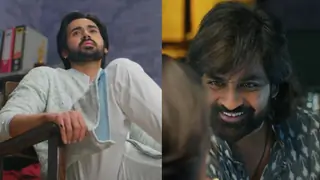'The Real Jurassic' on Nat Geo
National Geographic Channel premieres an action-packed series on Dinosaurs on December 24 at 10 pm
Published: Monday,Dec 17, 2007 16:54 PM GMT-07:00
 Speaking about the series, Rajesh Sheshadri, Senior Vice President – Content & Communication, National Geographic Channel India , said, "The Real Jurassic brings to light the latest dinosaur discoveries made in recent times, presented in an exciting and thrilling format. It is our way to end the year with a bang and we are confident that our curious viewers would appreciate the facts revealed in the series and enjoy the whole experience".
Speaking about the series, Rajesh Sheshadri, Senior Vice President – Content & Communication, National Geographic Channel India , said, "The Real Jurassic brings to light the latest dinosaur discoveries made in recent times, presented in an exciting and thrilling format. It is our way to end the year with a bang and we are confident that our curious viewers would appreciate the facts revealed in the series and enjoy the whole experience".
In Dino Autopsy , join top palaeontologists in the United States as they uncover the rocky tomb of 67-million-year-old dinosaur - Dakota, one of the most complete dino mummies ever found — calling into question our conception of dinosaurs' body shape, skin preservation and movement. Whereas most of our understanding of dinosaurs is based on fossilised skeletal remains, this specimen includes an uncollapsed skin envelope on many parts of the body and limbs that offers a degree of insight impossible from just bone structure. With the use of a giant CT scanner, scientists attempt to peer inside this preserved body and tail in one of the largest CT scans ever attempted.
Nearly everything we know of dinosaurs comes from bones and teeth, usually the only tissue durable enough to fossilize. But unlike most previous fossil finds, Dakota has survived millions of years nearly intact, with fossilized skin and tendons, allowing us to reconstruct major muscle sizes — with many body parts allowing a tantalizing glimpse of a 3-D dinosaur.
"It is quite fair to say that our dinosaur mummy [Dakota] makes many other dinosaurs look like road kill. Simply because the evidence we're getting from our creature is so complete compared to the disjointed sort of skeletons that we usually have to draw conclusions from", said Dr. Phillip Manning, palaeontologist, the University of Manchester.
Dino Death Trap offers groundbreaking revelations, including the discovery of new species of dinosaurs and unusual insights into their lives. In what is called the 'Pit of Death' in China, skeletons have been found stacked one on top of the other, piled four and five deep, including T-Rex's great-great grandfather — Guanlong. How did the skeletons end up together, frozen in time for 160 million years? What killed Guanlong and its unfortunate cohorts in the Pit of Death? And what clues does this death pit hold as to how the dinosaurs grew so big? For dinosaur hunters, it is a goldmine: a newfound mass grave of mysterious, well-preserved dinosaur skeletons — a rare and promising find that could change our understanding of dinosaurs and bring long-extinct secrets to life.
Apart from Dino Autopsy and Dino Death Trap, the series features three more exciting films including Quest for Dragons, Super Predators and Sky Monsters.
Join Our WhatsApp Channel
Stay updated with the latest news, gossip, and hot discussions. Be a part of our WhatsApp family now!
Join NowYour reaction
 Nice
Nice Great
Great Loved
Loved LOL
LOL OMG
OMG Cry
Cry Fail
Fail
















Post a comment